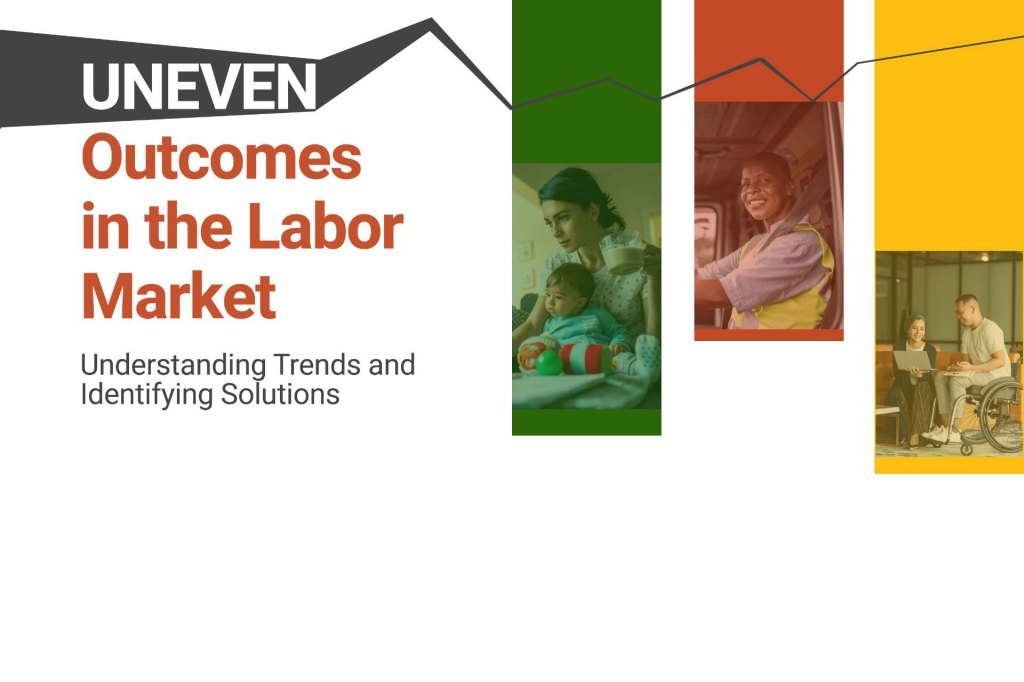Uneven Outcomes in the Labor Market
A Research Agenda on Gender and the Workforce


Overview
This research agenda on gender and the workforce is developed from a brownbag session on May 17, 2024 that followed the 2024 Uneven Outcomes in the Labor Market conference. The agenda draws upon insights provided by panelists Kristy Buzard, Heather Stephens, and Huanan Xu along with audience members who took part in the brownbag discussion. Audience members were Federal Reserve Staff representing researchers and policy analysts from the Reserve Banks and the Board of Governors. For additional information or follow-up questions, please contact:
Structural Factors
A variety of structural factors shape the extent of women’s participation and success in the workforce, including:
- Gender norms related to childcare and housework
- Job characteristics like high returns to working long hours
- Women’s occupational preferences
- Cultural influences on leave taking and work hours
- Economic conditions related to business cycles and technical change
- Discrimination in the workplace
Research examining these structural factors, when and how these structural factors are heightened or reduced and how these factors interact will help advance our understanding of women’s participation and success in the labor market. Data often poses limitations in studying structural factors, so new methods and clever data sources may be needed to make progress in these areas.
Policy Interventions
Policy interventions like the following can interact with structural factors to influence women’s labor market outcomes:
- Family leave for both childcare and elder care
- Safety net and social welfare policies
- Childcare and early childhood education
- Higher education and human capital development
Large administrative datasets are now facilitating research on policy interventions that may impact women’s success in the workforce. Additional research may help identify which policy interventions are most effective, the circumstances under which they have greatest impact, and how their design influences women’s labor market outcomes.

Heterogeneity Analysis
The impacts of structural factors and policy interventions likely vary across the following dimensions:
- Region and other geographic characteristics
- Race and ethnicity
- Age and time period
The rise of large administrative datasets can help facilitate crucial studies that examine how, when, and why women’s labor market outcomes vary across populations.
Related Research Questions
The following research questions build upon the discussion to provide specific ideas for future research:
- How do economic downturns and/or layoffs affect remote workers? Are they more likely to find jobs quickly due to a broad geographic search area or less likely to due to limited local networks? Are they more or less likely to anticipate potential unemployment—measured via spousal labor supply or consumption—due to their information set?
- What factors contribute to the change or lack thereof of gender norms for housework and childcare? What types of information or other interventions have effects on the relevant beliefs?
- In the past, how has technology influenced the returns to long hours of work, and how might AI and other new technologies influence the returns to long hours of work in the future? Which management practices affect the returns to family-unfriendly scheduling practices, including long work hours?
- How do the impacts of family-friendly policies—including those related to child and elder care—vary by region? What cultural factors influence the effects of family-friendly policies in different areas?
About the Series
In 2024, community development staff from the Federal Reserve Board of Governors and the Federal Reserve Banks of Atlanta, Boston, Cleveland, Philadelphia, San Francisco, and St. Louis hosted, Uneven Outcomes in the Labor Market: Understanding Trends and Identifying Solutions. The conference convened a diverse network of researchers, policymakers, and practitioners to examine inequities in labor market outcomes and explore the implications of disparities on aggregate economic performance, individual workers, and communities. They also discuss new directions for policy and research.
Understanding employment conditions requires evidence from a wide spectrum of sources. To this end, the Federal Reserve is interested in highlighting research that examines disparities in employment, labor force participation, income, and wealth across demographic groups. Analyzing disparate outcomes can inform policy that identify those who are excluded from the mainstream economy and suggests pathways for inclusion.





